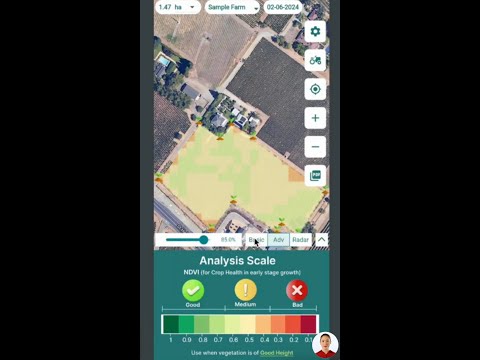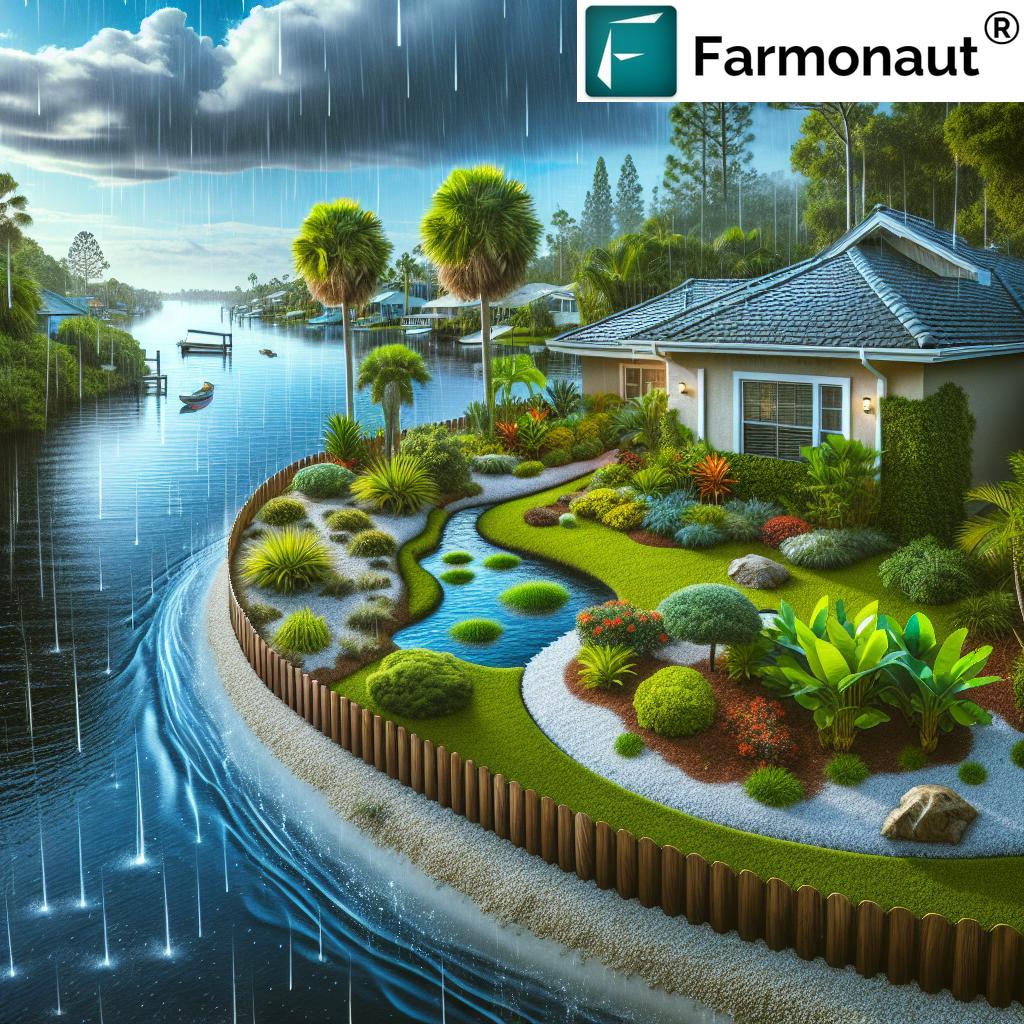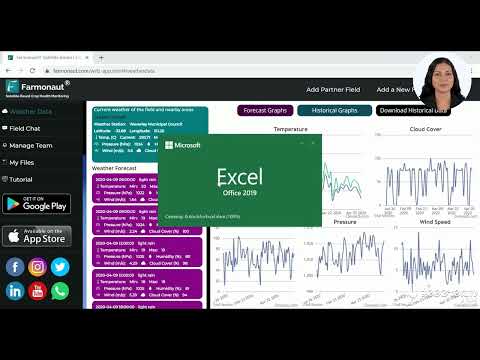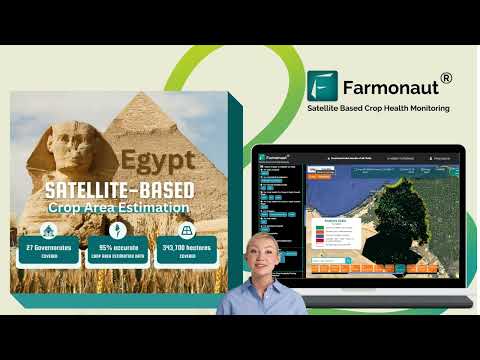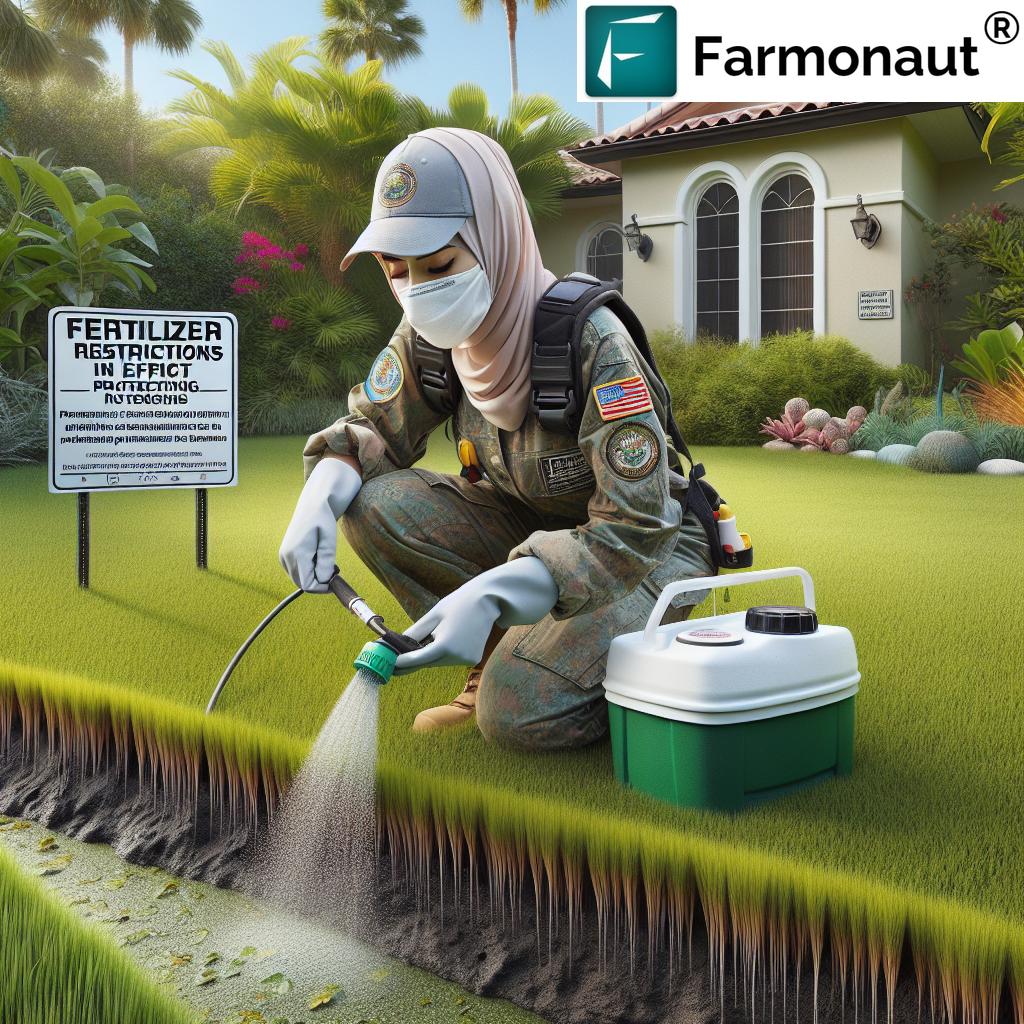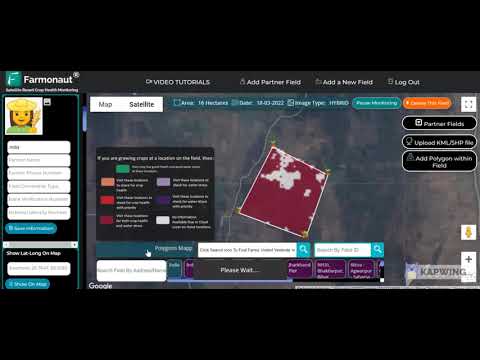7 Key Tips to Follow Brevard County Fertilizer Ordinance for Lagoon Care
Brevard County, Florida—Fertilizer application practices can make or break the health of our iconic Indian River Lagoon. Every rainy season, tons of runoff carrying excess fertilizer pollutants spill into this precious watershed, triggering persistent algal blooms and destroying native seagrasses and marine life. This is why the Brevard County fertilizer ordinance banning residential fertilizer use from June 1 to September 30 is such an essential line of defense for our environment and our communities.
After an especially dry start to 2025, our summer in Brevard flips the script—over 80% of our rainfall pounds down during these months, amplifying the risks from stormwater runoff, carrying fertilizer, debris, and other pollutants straight into the lagoon and its sensitive tributaries. Rain doesn’t just water our lawns; it whisks away everything in its path, negating any benefit the fertilizer might have had for our plants.
For those of us with properties on the edge of the lagoon or other surface water bodies, the threat—and our responsibility—doesn’t end with summer. A permanent 15-foot “fertilizer free zone” along the shoreline must be observed year-round to shield the water and aquatic life from nutrient loading.
Whether we fertilize ourselves or hire a company, following these rules helps ensure our yards, our investments, and our environment all thrive—so we can still enjoy beautiful landscapes, Florida-style, while safeguarding our lagoon’s future.
Understanding the Brevard County Fertilizer Ordinance
Brevard County’s fertilizer ordinance is a local regulation designed to control the use and application of fertilizer, particularly in residential properties close to bodies of water like the Indian River Lagoon. The rule aims to reduce the volume of pollutants entering the watershed. The main points of the ordinance are:
- Fertilizer Ban Florida: No fertilizer application allowed from June 1 to September 30.
- No fertilizer application within a 15-foot buffer (‘fertilizer free zones shoreline’) all year round along the lagoon, surface water bodies, and tributaries.
- Fertilizer must not be applied to lawns, plants, or landscape before heavy rain or on saturated soils.
- Only licensed companies or individuals trained in chemical applications are allowed to fertilize professionally.
The regulation falls in line with broader Florida lawn fertilizer regulations and is a model for “fertilizer restrictions near Indian River Lagoon” that help other counties maintain clean water.
Why the Ordinance Matters for Indian River Lagoon
Our Indian River Lagoon is one of the most biodiverse estuaries in North America, supporting hundreds of marine species, lush seagrass beds, and countless recreational opportunities. However, excess fertilizer pollutants—especially nitrogen and phosphorus—drive catastrophic algal blooms. These blooms cloud the water, block sunlight, and kill seagrasses vital to marine life. Worse, when algal blooms decay, they deplete oxygen, suffocating fish and further destabilizing the ecosystem.
- Stormwater runoff and algal blooms: When it rains, any surplus fertilizer not absorbed by plants is swept into storm sewers and directly into the lagoon.
- Tributaries and surface bodies: Even distant neighborhoods can contribute to the nutrient load, as every storm drain eventually feeds into a tributary leading to the lagoon.
- The Brevard Indian River Lagoon Coalition and community partners stress compliance as the first—and most crucial—step in lagoon restoration.
By following the fertilizer ordinance and promoting environmentally responsible practices on our own yards, we ensure that future generations will inherit a lagoon teeming with life.
7 Key Tips for Brevard County Fertilizer Ordinance Compliance
Protecting the lagoon from pollutants requires more than just following rules—it means actively rethinking how we fertilize, landscape, and manage our properties all year. Here’s a comprehensive, actionable guide to staying compliant and maximizing your positive environmental impact within Brevard County and beyond.
1. Respect the Fertilizer Blackout Period (June 1–September 30)
The heart of the Brevard County fertilizer ordinance is the summer fertilizer ban Florida.
- Do not apply any fertilizer to lawns, landscape beds, or residential yards during the blackout months (June 1–September 30).
- This includes both synthetic and organic fertilizers, unless specifically exempted (e.g., some garden vegetables).
- Why? June to September is our rainy season; statistics show that 80% of Brevard’s rainfall falls during these months. Any fertilizer applied is more likely to be washed away, ending up as pollution in our lagoon and tributaries rather than benefitting plants.
By following this simple but crucial rule, we prevent thousands of pounds of fertilizer runoff. You may think your lawn needs the boost, but skipping fertilizer during this period will do far more for the health of your property (and your community) than continual feeding.
2. Establish and Maintain Fertilizer Free Zones Along Shorelines
If your residential or commercial property directly abuts surface water bodies, including the Indian River Lagoon and its tributaries, you are required to:
- Leave a year-round 15-foot “fertilizer free” buffer zone along all shorelines where no fertilizer of any kind is applied.
- These buffer zones trap runoff and prevent nutrients from entering the water, protecting seagrasses and marine life from toxic algal blooms.
- Planting native vegetation or deep-rooted grasses in these zones provides a natural filter.
Whether you manage your own property or contract services, actively enforce these fertilizer restrictions near Indian River Lagoon—don’t let landscape companies cut corners.
3. Monitor Weather: Avoid Fertilizing Around Storms and Heavy Rain
Drenching rains are a Florida fact of life. But applying fertilizer before, during, or immediately after big storms means it won’t stay put. Instead, it’s swept away, sending costly nutrients straight to the lagoon.
- Never fertilize within 24–48 hours of forecasted rain or when soil is already saturated.
- Check weather forecasts before every application, not just in summer.
- This simple habit prevents “stormwater runoff and algal blooms” and stretches your investment by ensuring nutrients feed your yard, not the algae.
Tools like satellite moisture tracking—such as those in Farmonaut’s carbon footprinting tool—can help you optimize watering and application timing, reducing runoff and supporting lagoon restoration.
4. Choose the Right Fertilizer and Proper Application Methods
Not all fertilizers are created equal—nor is every yard’s need the same.
Key guidelines:
- Select slow-release, low-phosphorus fertilizers approved by Brevard County fertilizer ordinance.
- Never apply fertilizer closer than 15 feet from any stormwater system, swale, or shoreline.
- Avoid “weed and feed” products, which combine fertilizer with herbicide and risk overdosing your lawn.
- Apply precisely—don’t spread fertilizer onto driveways, sidewalks, or into storm drains where it can be washed away by rain.
- Calibrate your spreader and read product labels for local compliance.
Adhering to responsible residential fertilizer application rules ensures your yard thrives without unnecessary pollution. For large estates and agricultural properties, Farmonaut’s large-scale management tools help optimize chemical applications and track environmental impact.
5. Hire Only Brevard County Licensed & Trained Applicators
If you outsource your landscaping or lawn care, verify your provider’s credentials:
- Brevard County requires all professional applicators to be licensed and trained in safe chemical applications to lawns and plants.
- Licensed professionals have specific training in the fertilizer rules, landscape best practices, and how to minimize runoff.
- Request proof of license at least annually and ensure they’re familiar with Brevard County fertilizer ordinance updates.
This helps ensure only legal, eco-safe methods are used and that your property isn’t a polluter. If your company is unfamiliar with requirements, share the Farmonaut app and county resources to support compliance and ongoing training.
6. Adopt Florida-Friendly Landscaping and Reduce Fertilizer Need
The best defense is a yard that thrives naturally, with minimal inputs. Consider these landscaping tips for Florida yards:
- Replace high-maintenance lawns with Florida-Friendly Landscaping—native plants need less fertilizer, resist pests, and soak up runoff.
- Increase use of mulch to retain moisture and suppress weeds.
- Utilize groundcovers, rain gardens, and buffer strips of deep-rooted perennials in fertilizer free zones shoreline.
- Attend local workshops, join master gardener seminars, and leverage Florida-Friendly Landscaping resources offered by the University of Florida.
- For combatting yard pests, select integrated pest management approaches and avoid broadcast chemical applications whenever possible.
Nature provides all the tools we need to maintain healthy, beautiful yards while reducing pollution and benefiting the broader watershed. Farmonaut’s crop advisory and forestry management solutions (learn more here) can help homeowners and land managers select region-appropriate plants and optimize sustainable landscaping practices using satellite insights.
7. Test Your Soil Regularly and Use Data for Smarter Applications
Overuse of fertilizer is usually a guess gone wrong.
Instead, use science:
- Test your soil every year with help from local horticultural experts or university master gardeners.
- Soil samples reveal nutrient needs, helping avoid over-application and targeting only deficient areas.
- Ask professionals or certified labs for advice on interpreting results and recommended product types.
- Utilize satellite and AI-based soil moisture and nutrient analytics—Farmonaut’s real-time monitoring provides actionable data for large landscapes and commercial properties. Check advanced farm advisory features.
Regular soil testing can minimize fertilizer use, cut costs, and help revive the Indian River Lagoon by preventing unnecessary nutrient runoff into Brevard’s surface water bodies.
Brevard County Ordinance Compliance Checklist Table
| Tip/Ordinance Guideline | Required Action | Estimated Compliance Effort (Time/Resources) | Relevant Season/Timing | Environmental Benefit |
|---|---|---|---|---|
| 1. Blackout Period (June 1–Sept 30) | Cease all residential fertilizer applications | Low: Mark calendar, adjust lawn care schedule | Summer (peak rainfall period) | Up to 70% reduction in fertilizer runoff into lagoon |
| 2. Shoreline Buffer (15’ fertilizer free zone) | Designate and maintain buffer with no fertilizer | Varies: One-time setup, minimal ongoing | Year-round | Blocks direct runoff; vital for seagrass & marine life habitats |
| 3. Rain Event Precautions | Avoid application prior to heavy rainfall/storms | Low: Check forecast before application | All seasons, especially wet periods | Prevents up to 50% of applied fertilizer from washing away |
| 4. Fertilizer Selection & Precise Application | Use slow-release, low-phos; avoid paved areas | Medium: Review products, retrain users | Whenever fertilizing permitted | Reduces risk of chemical leaching and runoff |
| 5. Hire Licensed Applicators | Verify landscape company licensing & training | Low: Annual verification | Ongoing | Ensures compliance, protects lagoon |
| 6. Florida-Friendly Landscaping | Use native, drought-tolerant, low-input plants | Medium-high: Initial landscape redesign | Year-round focus | Long-term reduction in fertilizer and water use |
| 7. Test Soil & Smart Applications | Annual soil sample and targeted fertilizer | Medium: Arrange sampling, interpret results | Once a year minimum | Minimizes needless fertilizer use, cuts costs & pollution |
Quick Actions for Protecting the Lagoon from Pollutants
- Share the ordinance: Educate your neighbors and HOAs. Collective compliance multiplies the benefits of the fertilizer ban Florida and other regulations.
- Report violations: If you witness illegal fertilizer applications during blackout season or in buffer zones, contact county environmental authorities.
- Support the Brevard Indian River Lagoon Coalition—join cleanups, restoration projects, and advocate for stronger water quality policies.
- Ask horticultural experts for advice or soil testing. Master Gardener volunteers are a free and invaluable resource for local gardening questions.
- Use Farmonaut’s tools (traceability, fleet management) for professional lawn, landscape, or community property management to track environmental compliance and minimize chemical footprints.
Farmonaut Technologies: Precision Environmental Stewardship
While the ordinance is vital, advanced technology makes compliance seamless and magnifies our ability to restore the Indian River Lagoon.
Farmonaut is at the forefront of this mission, equipping individual property managers, landscapers, homeowners’ associations, and even local governments with cutting-edge digital solutions:
- Satellite-Based Crop & Landscape Health Monitoring: Get NDVI, soil moisture, and vegetation insights in real time—streamlining your fertilizer schedule and minimizing input costs (check out Farmonaut’s carbon footprinting and monitoring).
- Jeevn AI Advisory: Receive localized, AI-powered guidance for fertilizer application, irrigation timing, and pest management. Save time and protect your plants and local water bodies.
- Blockchain-Based Traceability: Certify the origin and environmental stewardship of landscaping inputs, supporting community transparency. (Learn more here.)
- Resource and Fleet Management: Monitor workforce activities on large residential or commercial landscapes. (Farmonaut’s fleet solution)
- API & Integration: Developers and landscape service providers can directly access satellite and weather data through Farmonaut’s API (developer docs).
- Platforms: Mobile app (iOS & Android), web portal, and scalable API, allowing everyone from homeowners to large property managers to leverage advanced agri-environmental intelligence (see download links above).
This modern approach takes the guesswork out of compliance, enabling smarter fertilizer and resource use all year. Whether for your own home or a network of properties, Farmonaut helps keep fertilizer and pollutants out of our lagoon and tributaries.
Farmonaut Subscriptions and Satellite Access
Farmonaut offers affordable, flexible subscription plans for individuals, communities, and businesses who want real-time satellite monitoring, carbon accounting, and sustainable landscaping intelligence. Accessible via app or web, it’s easy to get started—no technical expertise required.
Whether you’re striving for environmental compliance, reducing landscape inputs, or simply protecting the beauty and biodiversity of Brevard’s waterways, Farmonaut provides the tools and real-time insights needed to make informed, sustainable choices.
FAQ: Brevard County Fertilizer Ordinance & Indian River Lagoon
Why is the fertilizer ban from June 1 to September 30 so important?
Because over 80% of Brevard’s annual rainfall occurs during these months, any fertilizer applied is likely to be swept into storm sewers and then the lagoon. Contaminant spikes lead directly to algal blooms, seagrass die-off, and fish kills.
What happens if I ignore the fertilizer blackout period?
Beyond risking fines and county enforcement actions, out-of-season fertilizer application makes you responsible for pollution harming the Indian River Lagoon. The nutrients feed harmful algae, reduce water clarity, and endanger wildlife.
Do I have to follow the 15-foot shoreline buffer if there is a seawall?
Yes. The fertilizer free zones shoreline rule applies to all properties adjacent to the lagoon or other water bodies, whether there is a natural bank, seawall, or canal—year-round.
How can I tell if my lawn actually needs fertilizer?
Test your soil. Use local horticultural experts, county extension agents, or advanced AI-based diagnostics (see here) for a data-driven approach to yard care.
Are there grants or resources for Florida-Friendly Landscaping?
Yes! The University of Florida and local county offices offer classes, resources, and sometimes even plant subsidies for those reducing fertilizer and water use. Florida-Friendly Landscaping resources cover everything from plant selection to effective layout design.
Can Farmonaut help homeowners, not just commercial farms?
Absolutely. Farmonaut’s monitoring, advisory, and environmental intelligence tools are accessible for users at all scales—from backyard gardeners and HOAs to large residential developments, making sustainable, informed landscape care possible for everyone.
How do I report a violation of the Brevard County fertilizer ordinance?
Contact your county’s environmental enforcement line or report directly online. It’s anonymous and helps protect the lagoon for everyone.
Does the fertilizer ordinance apply to all fertilizers?
The blackout period and shoreline buffer apply to all residential fertilizers, both synthetic and organic, unless specifically exempted (e.g., some edible food gardens; check local ordinances for details).
Conclusion: Our Shared Responsibility for Lagoon Restoration
By understanding and implementing the Brevard County fertilizer ordinance and the seven key tips above, each of us takes part in safeguarding the health and resilience of the Indian River Lagoon.
Every yard, storm drain, and shoreline in Brevard adds up—what we do at home makes a difference countywide.
Combined with new technologies—like those offered by Farmonaut—and support from organizations such as the Brevard Indian River Lagoon Coalition, sustainable landscaping and responsible fertilizer use become not only possible, but easy and rewarding.
Let’s ensure our landscapes are as resilient and beautiful as the very waters we seek to protect.
If you’re ready to optimize your yard care and support lagoon restoration, explore the resources and smart tools above. Every wise action counts for Brevard, Florida, and our shared environment!
